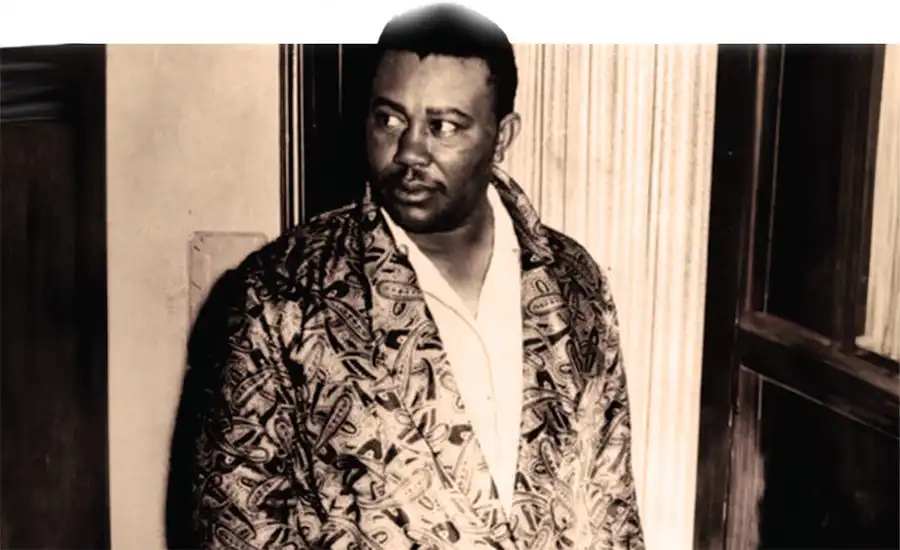By: Clarence Walker
Houston’s Black History Month spotlights the story of a wealthy cattle rancher who broke the segregation barrier in an affluent all-white neighborhood. The captivating tale is another episode of Houston’s forgotten past. To get there, take a ride going south on 288 to MacGregor and explore the neighborhood’s natural beauty, popularly known as Riverside Terrace. Riverside Terrace’s exquisite upscale neighborhood exudes a vibe reminiscent of New Orleans rather than Houston, with grand Mid-Century Modern residences gracing the meandering streets that align with the natural flow of the Braes Bayou watershed. Within the Riverside Terrace neighborhood, one can stumble upon striking Art Deco architectural marvels juxtaposed against lush overgrown lanes that intersect the winding streets, connecting them with the gentle streams that flow into the bayou.
Developed in 1924, Riverside Terrace was built by prominent Jewish families of Houston who built their homes on the hilly landscape of southern downtown overlooking Brays Bayou. Riverside accommodated the housing needs of Houston’s emerging affluent families involved in the oil and gas industry and the merchants serving Houstonians. A key factor behind the development of many residences in this vicinity was the exclusion of Jewish families from residing in River Oaks. In response, prominent families such as the Battlesteins, the Fingers, the Sakowitzes, and the Weingarten family commissioned renowned architects like Birdsall, Birscoe Bolton & Barnstone, John Chase, and John Staub to design opulent estates that rivaled the luxurious estates throughout the most affluent areas of the bayou city. e neighborhood quickly gained prominence as an affluent hub of the Jewish community, earning the moniker “the Jewish River Oaks”
A Black Cattle Rancher Integrated Riverside Terrace
What the wealthy white Jewish residents in Riverside Terrace didn’t realize they were in for a rude awakening if they thought their neighborhood would remain the same. In 1952, the beginning of a pivotal journey for affluent African American cattle rancher Jack Caesar, who was chasing the American dream. He had the cash to make it happen. As Caesar sought to find real estate opportunities, he encountered a stark reality of constrained choices laid before him: racial segregation. Racial segregation forced African Americans to reside in a particular section of the city to live among themselves. Life was harsh for Blacks during the turbulent segregation era.
Wealth Didn’t Matter: No Blacks Welcome
Irrespective of their wealth, Caesar and his peers faced the stark reality of exclusion from predominantly white neighborhoods. However, Caesar was undeterred by the prevailing racism in his pursuit of owning his ideal residence. Finally, a thorough search paid off. Caesar spotted a lavish two-story brick house in Riverside Terrace. But he needed to stay under the radar to make the purchase. Caesar entrusted his white secretary to purchase the property on his behalf. Following the transfer of ownership, Caesar and his family obtained the deed to the new residence. Under cover of darkness, the family quietly moved in. When the neighbors uncovered Caesar’s deceit, they were outraged. To ease tensions, Caesar and his family chose to handle the delicate situation with subtlety and grace. Riverside residents accused the NAACP of funding Caesar’s expenses to integrate their segregated neighborhood. Unable to force the family out, the residents decided to wait and see what would happen. From all accounts, everything went fine for most of that first year.
A Bomb Goes Off
Among the haters, a plot was hatched to kill the Caesars or at least force them to flee Riverside Terrace. On April 17, 1953, during nighttime, four sticks of dynamites were planted on the Caesar family’s porch. The explosion of the bomb resulted in shattered windows and severe damage to the front porch; miracu;ously, no casualties or injuries were reported. According to historical accounts, the bombing was intended to instigate fear rather than result in casualties. The intended targets did not respond as expected to the bombing. Caesar and his family stubbornly chose to remain in their home despite the serious attempt to harm them. Former elected Legendary Harris County Sheri Jack Heard who was a Houston Police Detective at the time when the bombing exploded at Caesar’s home in 1953, investigated the high-profile case along with Breckenridge Porter including the FBI. An investigation led to the arrest of two white men; 56-year-old George Howell and 51-year-old Carl Dewey “Red” Davis. Both were charged with arson. Howell paid Davis to detonate the bomb because Howell felt Blacks shouldn’t live in white neighborhoods.
Adverse Consequences
In an odd turn of events, the bomb had the unintended effect of forcing nervous white residents to put their properties up for sale. “ The exact opposite happened,” said Dr. Joshua Furman, in the Houston based Jewish Herald-Voice. “It created a culture of fear and panic among the whites of Riverside Terrace, Jews and non-Jews. Was the neighborhood still a safe place to live? What would happen to the value of their properties if more violence occurred or more black families moved in?”
Real Estate Agents Exploit Neighbor’s Fear
During the 1950s and 1960s, real estate agents urged white families in Riverside Terrace to sell their homes. Despite some pushback against the practice known as blockbusting, the demographic composition of the neighborhood underwent a significant shift as white residents in the area plummeted from nearly complete dominance to just a quarter of the population. Following the bombing attempts on Caesar’s home, the white residents who ed the area made a pact they wouldn’t sell their homes to blacks. Regrettably, these efforts proved futile as the initial phase of rich white residents moving out, known as white flight, ushered in a transformative period for the city.
Developers Purchased Empty Homes
As the rich whites gradually moved out developers purchased many of the large homes and tore them down to replace the palatial estates with low cost, easy-to-build apartments. Many of those apartments were built without air conditioning which forced the low-income black residents into nearby Houston’s bustling streets rife with prostitution and other criminal activities. Developers also tore down homes along the main thoroughfares and replaced them with strip centers and commercial real estate.
The changes
scared more white residents into selling, which, again led to the construction of more cheap apartments attracting more low income black residents. Seven years after Jack Caesar moved in, a decision changed the neighborhood forever. In 1959, amid falling home prices and white ight, city planners and the Department of Transportation reconsidered the building and location of Hwy 288. Highway 288 was originally to be built alongside Almeda Road. But Transportation officials shi ed the location slightly eastbound to better serve commuters. These plans placed the freeway’s path through Riverside Terrace, demolishing Jack Caesar’s house. Caesar was paid a hefty sum of money to sacrifice his property. During the early 1960s, Riverside Terrace was predominantly Black. Meanwhile, the rich white residents of the neighboring Riverside thought the bayou would halt black migration into this second prominent area. Would a bayou stop the spread of migration? White Riverside residents were wrong.
The Second Riverside Across the City’s Bayou
As the remaining white residents of the second Riverside across the bayou unsuccessfully fought off integration they relented and forged a grassroots campaign to demonstrate their commitment to the community and promote inclusivity. Riverside residents also rebuffed the real estate agents’ pressure to force them to sell their homes to pocket easy commission sales. To prove they meant business the white residents put up signs in their yards reading, “This is Our Home, It is Not for Sale.” While the sentiments were heartfelt it wasn’t enough to keep the neighborhood from changing, By the early 1970s, almost all of the palatial homes off MacGregor were owned by blacks. In 1971, a real estate agent told the Houston Chronicle that only “one or two” whites remained in the area. Riverside Terrace and Riverside Across the Bayou would become the city’s Black population’s elite neighborhood; the same as it had been to the Jewish families, a populated neighborhood filled with a strong sense of community and success. As these ethnic demographics took e ect during the 1970s’ most of the Riverside Jewish and non-Jewish population migrated to Meyerland and eventually River Oaks began accepting Jewish families into their most prestigious circles.
Today’s Riverside Terrace
Over the past 20 years, Riverside Terrace has undergone significant developments in its construction and added commercial businesses. All the changes attracted an increasing number of people seeking to revive the historic neighborhood and restore the old mansions constructed decades ago. The area boasts a range of appealing features that contribute to its glowing attraction, such as its short distance to downtown, Hermann Park, the Medical Center, and the Museum District.
Additionally, MacGregor Park stands out as a popular and secure recreational hub for the neighborhood’s residents. The community is richly situated within the zoning boundaries of several prominent schools within the Houston Independent School District (HISD), such as Lockhart Elementary, Ryan Middle School, Jack Yates High School, and Lamar High School. Within proximity are distinguished private educational institutions that cater to many of the residents of Riverside Terrace, such as St. Mary’s Catholic School serving PK-5 students and St. Peter the Apostle Catholic School accommodating 6-8 graders. Riverside Terrance is less than a mile away from Texas Southern University and the University of Houston, according to Wikipedia. For families seeking abundant living space, convenient accessibility to key Houston locales, and an appreciation for the historical charm that characterizes the area, Riverside Terrace presents itself as an ideal residential choice.







